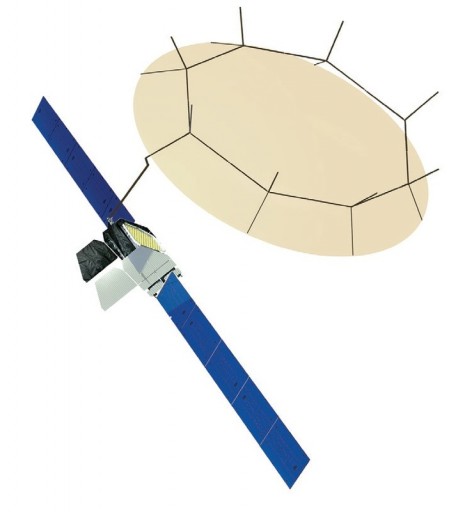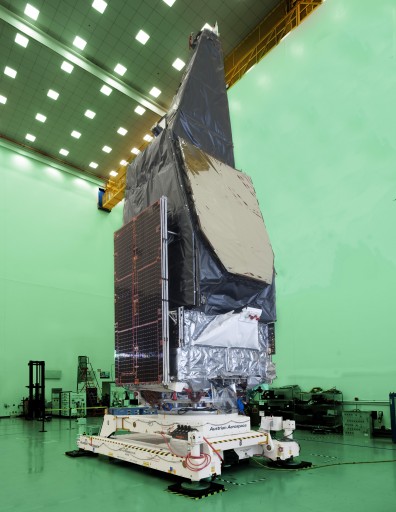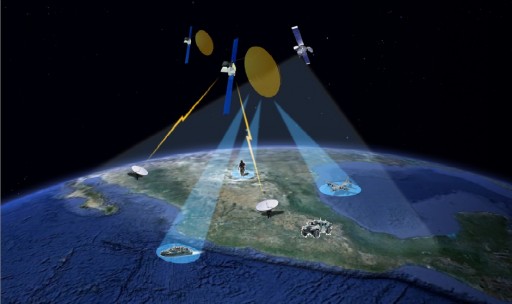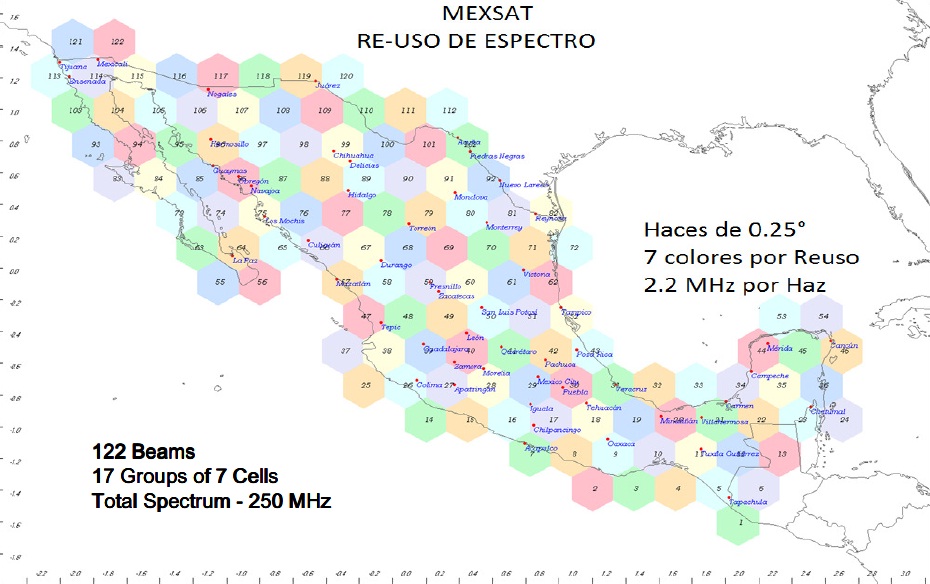Morelos 3 Satellite Overview

Morelos 3, also known as MexSat 2, is a geostationary communications satellite built by Boeing Satellite Systems and operated by the Secretary of Communications and Transportation of Mexico. It is based on the popular 702 Satellite Platform in its high-power configuration. The satellite was ordered in late 2010 under a deal of approximately $1 billion between Boeing and the Mexican government for the delivery of an end-to-end Satellite Communications System consisting of two Boeing-built spacecraft and associated ground infrastructure. A third, smaller satellite was ordered from Orbital Sciences under the name MexSat-3 (Bicentario) and was launched atop an Ariane 5 in 2012.
The MexSat-1 satellite, called Centenario, was lost earlier in 2015 when its Proton-M suffered a catastrophic failure within the steering engine of its third stage that left the rocket without control leading to an emergency shutdown followed swiftly by the destructive re-entry of the launch vehicle and satellite. Mexico collected a $390 million insurance payout, but the loss of the Centenario satellite primarily meant a loss in capacity of the space segment until a replacement can be launched. It also increased the pressure on the Morelos 3 satellite to make it to orbit to establish an operational capability in communications services.

The selection of the more expensive Atlas V rocket for the launch of Morelos 3 was made in 2013, contracted through Lockheed Martin Commercial Launch Services. This marked the first selection of Atlas V for the launch of a commercial satellite in several years given the rocket’s hefty price tag. However, there have been a number of reasons for the satellite’s operators to decide in favor of Atlas V such as the decline in reliability of the Proton rocket and the booked manifests of Ariane 5 and Falcon 9. Additionally, a reduction in launch prices was advertised by Lockheed Martin to win over commercial customers in a manifest that is dominated by U.S. military and government satellites.
The MexSat constellation will be used to deliver secure communications for Mexican government agencies to serve national security. Also, the satellites will enhance the country’s civilian telecommunications capabilities. MexSat-1 and 2 cover the Ku- and L-Band range of the spectrum while MexSat-3 delivers additional Ku-Band connectivity and C-Band communications. Two ground stations are used to support the MexSat Constellation. MexSat delivers a 3.5G full IP communications service for voice, data, video and internet access to terminals across multiple platforms.
MexSat-2 is based on Boeing’s BSS-702HP satellite platform, the high-power configuration of the 702 bus that can support the most powerful communications payloads with state of the art onboard systems including precise pointing capability and the use of flight-proven components and built-in redundancy to ensure the satellite meets its in-orbit lifetime of 15 years.
In its stowed configuration, the satellite measures 9 meters high, 3 meters wide and 4 meters long with a total launch mass of 5,325 Kilograms. With its solar arrays, communications antennas and radiator panels deployed, the spacecraft is 22 by 29 by 41 meters in size. After its transition into Geostationary Orbit, MexSat-2 will weigh 3,200 Kilograms.
The two deployable solar arrays each have five wings that are covered with ultra triple-junction gallium-arsenide solar cells which deliver a beginning of life power of 14 Kilowatts decreasing to 13kW at the end of the satellite’s service life. Power is stored in dual Lithium-Ion batteries and dedicated avionics regulate the main power bus of the spacecraft to provide power to all subsystems of the satellite bus and the communications payload.

The satellite is equipped with a 490-Newton bipropellant apogee motor for the climb into Geostationary Orbit. In addition, the satellite uses four axial 22-Newton Thrusters and four radial 10-Newton thrusters for smaller orbit adjustments, drifting in Geostationary Orbit and attitude maneuvers.
The communications payload of the spacecraft consists of an L- and Ku-Band component with a prominent 22-meter deployable L-Band reflector and a 2-meter Ku-Band antenna reflector. The L-Band system delivers 122 spot beams of coverage to mobile terminals in the Mexican territory as well as the Gulf of Mexico and Pacific Ocean. The Ku-Band payload will be used for high-data rate communications including voice, video and secure data links.
The MexSat-2 spacecraft will operate from 117° West for an in-orbit service life of at least 15 years.

